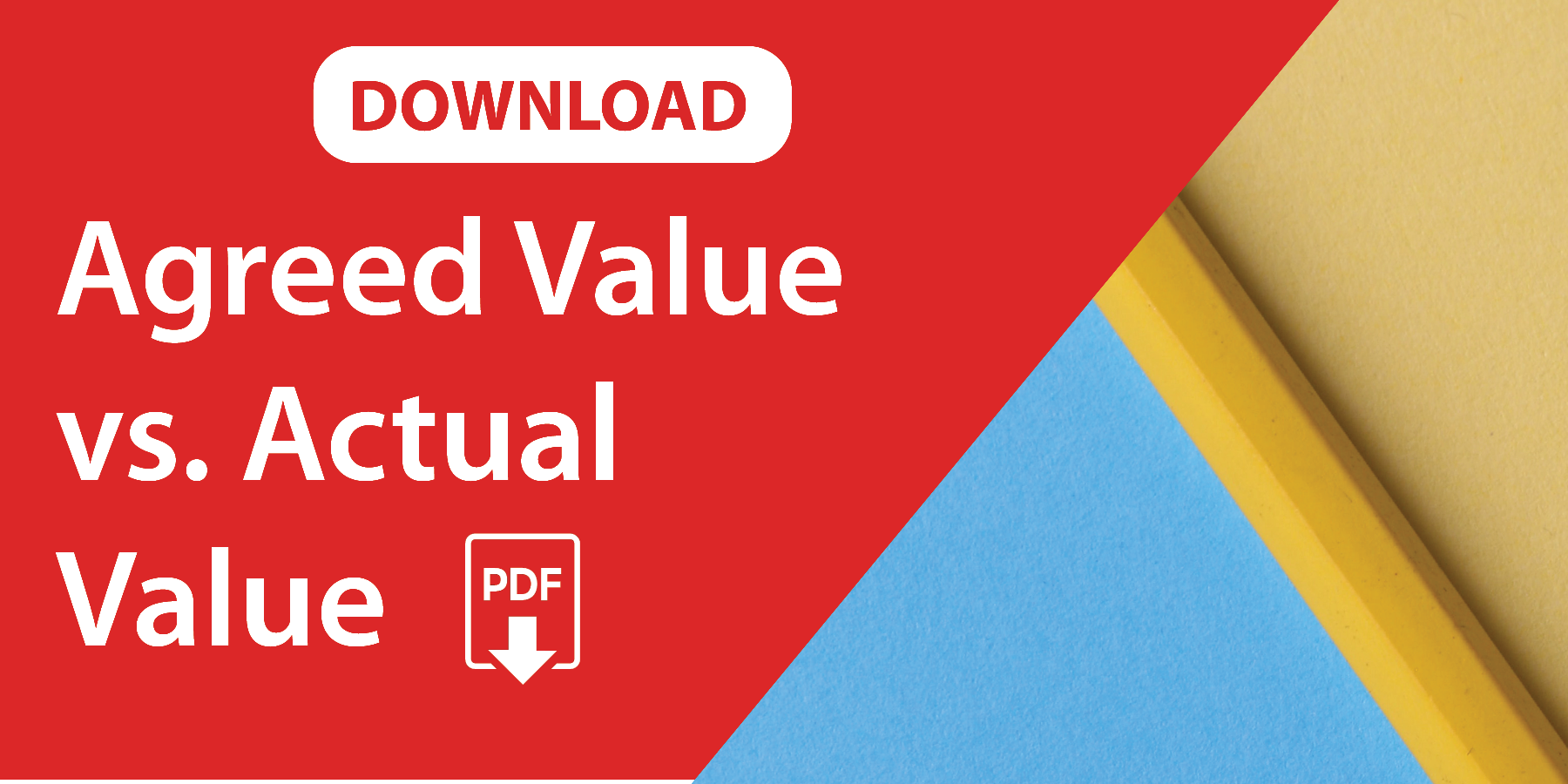Insuring items is a tricky business. How much coverage do you need? Is it totally pertinent that this be covered or that be covered? Why is your premium so high? Do you REALLY even need insurance on this particular item? Let’s take a more in depth look at one coverage to consider: Actual Value vs. Agreed Value.
What you will learn:
What is Actual Value?
Actual value is calculated as the amount to be paid after loss or damage to the property, factoring in depreciation.
This involves coinsurance, meaning the insurance company will cover a certain amount and you will be liable for the remaining.
Actual Value: Are you "fully" covered?
When you get into an accident and total your vehicle, the insurance company will pay a claim. They don’t, however, pay the claim for the amount you paid for the vehicle. They factor in the condition of the vehicle and deprecation to determine the settlement.
Example:
$30,000 (Car Value) – $6,000 (Depreciation) = $24,000 (Actual Value)
What is Agreed Value?
Agreed value is calculated as the full insured amount of the property with no depreciation. Let’s take another look at that car: Did I mention it was a Ferrari? The agreed value will return the total amount the vehicle was worth, before any theft or damage.
Example:
$500,000 (Car Value) - $0 (Depreciation) = $500,000 (Agreed Value)
What Does It All Mean?
In the simple terms, actual value is the everyday norm. It’s used to insure everyday items that can be easily replaced.
Let’s get back to that car; now a Ferrari cannot be replaced at the tip of a hat. The Ferrari California, the most widely produced model, takes about three weeks to make and currently has a two year long wait list. It’s a pricey purchase too, averaging around $192,000.
So, insuring at Actual Value is the best move, right?
It depends. In this instance, Actual value would not be the best option for a Ferrari. Why? Because you don’t want to receive just a portion if the hundreds of thousands of dollars back that you paid for this vehicle. You want to get all of that back.
How do you insure your property at Agreed Value?
Anything you own that is rare and irreplaceable, you should definitely consider insuring it at agreed value.
The first step is to contact your local insurance agent. Your agent will then put in a request to the insurance company to agree on a value. From there, an appraisal will most likely be requested.
Insurance companies like to do their homework and will ask you questions to ensure what they are providing coverage for is actually valued at the price stated.
Things to note when insuring at Agreed Value:
- Total amount of the purchase, or what you paid for the property
- Appraisal Value
- Appreciation rate (special riders might have to be considered to include appreciation values in the policy)
- The value of any modifications
Which is right for me?
Now you know the difference between actual and agreed values, as well as the best way to go about settling on an agreed value.
Before we wrap up, let’s get a better idea of things that would be best insured under actual value and agreed value...
Actual Value
- Standard Cars
- Standard Homes
- Appliances
- Electronics
Agreed Value
- Luxury items (cars, homes, etc)
- Fine arts
- Antiques (Jewelry, Furniture, etc.)
- Collectibles/ Rarities
- Wine Cellars
- Autographs & other memorabilia




